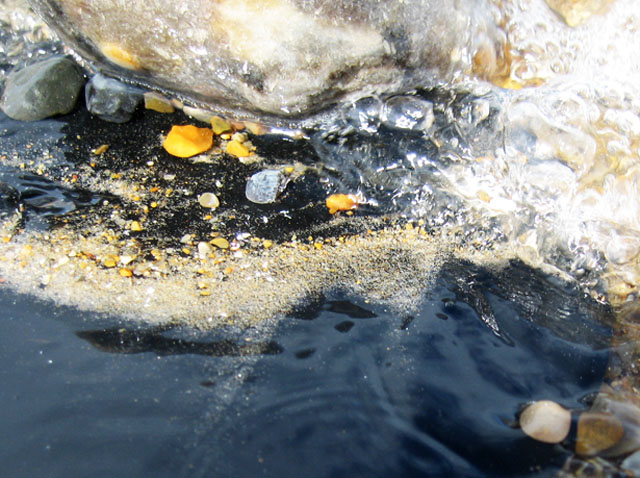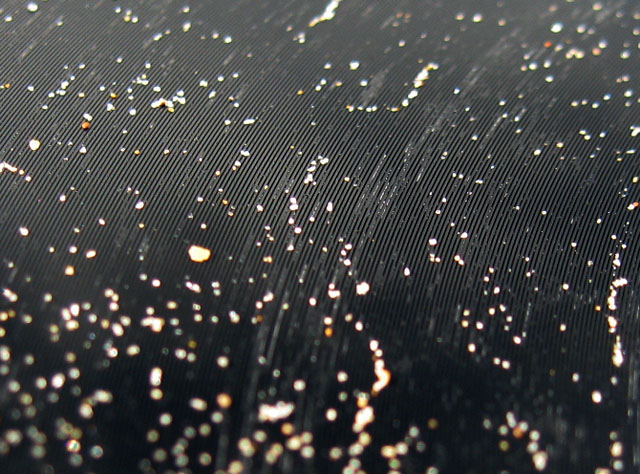
Prepared air harp. Dungeness.
Imagination is the power of appearing things, not of representing them.
The LIfe of Lines. Tim Ingold.
As part of two covert FM transmissions from Fog Signal Building, Dungeness, and Knowles Farm. Isle of Wight (IOW), I ‘prepared’ an autoharp with plectrum of dismantled clock hands and a pocket-sized museum of nautical litter collected from walks along the shoreline (tangles of fishing line, pebbles, shells, nails, feathers). As the sea breezes over the shingle and harp, fragments of text cut from the International Code of Signals are scattered, music suddenly appears, melodies plucked from thin and salty air mingling with the atmospheric static of FM transmission.
In this ethereal concert of aeolian song, music is immediately composed in correspondence with the breeze, melodies occurring neither in the objects or strings, nor even in the weatherly air, but appearing in-between them.
I borrowed this compositional method for a new series of drawings of sound on paper. These drawings or Correspondences, seek not to represent sound but to allow sound to appear, to draw the ear, by way of the eye, toward the potentiality of sound.
From Correspondence no.1 / no.2.
To compose the drawings, a small cardboard box was lined with two sheets of paper, and ‘prepared’ with relics from the preparation of the harp, together with fragments of charcoal, pencil, and broken ball points. The box was then weighed, stamped, and posted home second class. Three days later, having been handled with varying degrees of care, the box returned and the drawings appeared.
Composed in correspondence with the systemised transit of her Majesty’s Royal Mail, the drawings are quiet, slight, and insignificant. Occasional dots, hesitant lines, and dusty corners stained with inky stillness, mark time, and motion, providing visible residues of sounds that occurred and ceased.

A Blink From Sonic Eyes, Drawings from the Fleeting Archive of Towards Sound at re:future Lab (Berlin), Installation Shot. Image courtesy Ruth Wiesenfeld.
The composer and curator Ruth Wiesenfeld teaches Awareness Through Movement, at the Hochschule für Musik Hanns Eisler, Berlin. Ruth initiated the project Toward Sound, which ‘collects visible traces of creative processes geared towards all sound-based arts exploring diverse approaches of rendering sonic imagination tangible.’ As part of Toward Sound, Ruth curates, The Fleeting Archive. This repository for visual ephemera of the compositional process, gathers: ‘Acts of drawing, sculpting, writing, filming, ordering, assembling and taking apart’, which ‘facilitate a deeper comprehension of ones imagined sound.’ Occasionally, selections from the Archive are exhibited in the guise of the ever-changing Rampant Wall.
I was delighted to have works accepted into the Archive, and subsequently approached Ruth to see if she would be interested in taking part in a new Correspondence. The drawing would be composed in the space in-between us. I would prepare a drawing and post this to Ruth. On its arrival in Berlin, Ruth would listen to the appearance of the drawing as an appearing sound.


Correspondence no.4. 2022. (636 miles / 24 days) Winchester to Berlin
The lid of a small box was lined with grey sandpaper and its base with thick handmade watercolour paper. Inside I placed an ensemble of small sculptural instruments constructed especially for this transit, using marine selvedge from Dungeness and IOW combined with fragments of graphite, chalk, charcoal, and cardboard.
The correspondence was digitally tracked, leaving the UK on the 20th April and arriving in Niederaula, Germany on the 24th. It waited some time in non-EU customs for ‘preliminary import checks’, ‘processed’ and marked with a blue exclamation mark it arrived in Berlin on the 15th May. All instruments were broken in transit, but Ruth emailed:
‘I just opened the box, look what was drawn…a whole symphony. It will sit on my desk until sonic responses emerge.’
Sound waits in-between appearance and appearing.
Correspondence no.4. 2022.
(636 miles / 24 days)
Images: Ruth Wiesenfeld




















































